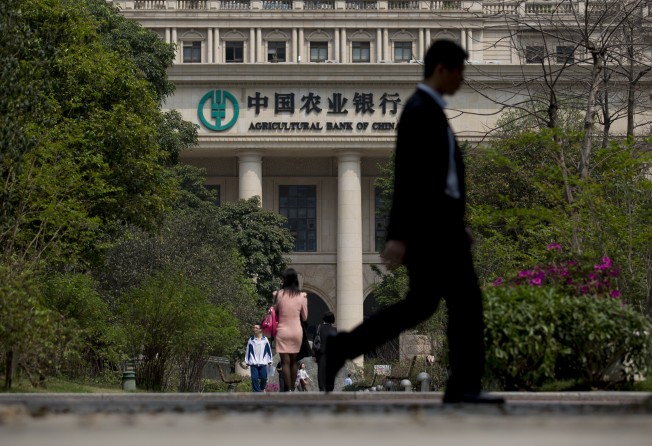Capitalisation gap forming between China's biggest banks as Basel deadline looms
Capitalisation gap between mainland's biggest lenders widened in first half, adding to concern some will miss Basel deadline if debt worsens

The capitalisation gap between China's biggest lenders widened during the first half of the year, adding to worries that some will fail to meet a 2018 deadline.
Meanwhile, some mid-sized lenders seemed to ignore the capital-building exercise, designed to hold banks together in a crisis, as they grew risky off-book lending businesses.
Recommendations from the Basel Committee on "common equity tier-one" capital have gradually grown in significance for Chinese lenders as more have been included on a list of banks that Basel deems systemically important to the global financial system.
Agricultural Bank of China, the country's third-largest commercial bank by assets, was added to the list last year, joining Bank of China and Industrial and Commercial Bank of China.The problem for Agricultural Bank was that, as a globally systemically important bank, its core capital adequacy was far behind its Chinese peers at the end of June.
The bank posted a common equity tier-one ratio of 9.3 per cent for the first half of the year, far below the 11.5 per cent target that banks of its calibre will need to achieve by January 1, 2018.
Nomura analyst Sophie Jiang said in a note that rate left Agricultural Bank subject "to a potential capital shortfall by 2018 as a [globally systemically important bank]".
Despite a sharp slowdown in China's banking sector, Agricultural Bank expanded its total assets by 9.3 per cent between January and June, quicker than its peers and a hindrance to its ability to catch up on regulatory capital levels. By comparison, Bank of China's total assets grew by just 6.9 per cent.
Bank of Communications, the country's fifth-largest commercial bank, was another bank coming under some pressure from the Basel deadlines. Its total assets grew by more than 13 per cent in the first half and saw its core tier-one capital adequacy ratio shrink from a high 11.3 per cent at the end of last year to 10.86 per cent in June.
Views differ on how much regulatory capital the banks should hold at present, with the deadlines still years off.
"While core tier-one equity ratios may have dropped at some Chinese banks, they are on average maintaining ratios that are higher than Basel's recommended 7 per cent," said Yang Jianqing, a senior manager at Accenture's China financial services unit.
Regulators have implemented their own versions of Basel's recommendations. With the addition of countercyclical buffers, operational buffers and extra capital for systemically important banks, the expected end target in China ranges between 9.5 and 11.5 per cent, depending on the size of the bank.
Given the buildup in bad debt in China, a bailout could require more capital than some assume, said Mizuho analyst Jim Antos.
"We think that the impairment and write-off costs needed to resolve China's systemic credit crisis would have a substantial impact on capital adequacy, assuming that the banks and the authorities were ever willing to face economic and financial realities on this score," Antos said.
The low capitalisation at Agricultural Bank was especially worrying when factoring in its 1.83 per cent non-performing loan ratio, an industry high.
The biggest gap in capitalisation has formed between the big banks and the mid-sized ones.
The core tier-one capital adequacy ratio at China Everbright Bank fell 10 basis points to 9.24 per cent in the first half of the year. At city lender Huishang Banking Corp, it fell from 11.5 to 9.7 per cent, while Shengjing Bank dipped below the 10 per cent threshold in June.
Shengjing is especially worrying because its shadow lending grew by 30 per cent in the first half of the year to nearly 200 billion yuan while its peers stepped on the brakes.